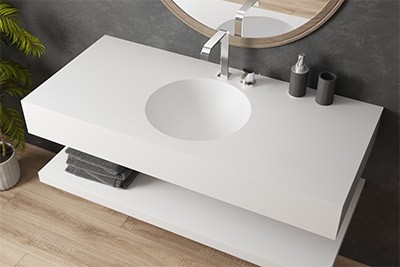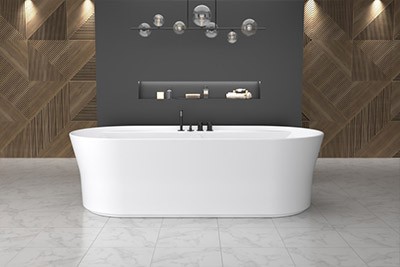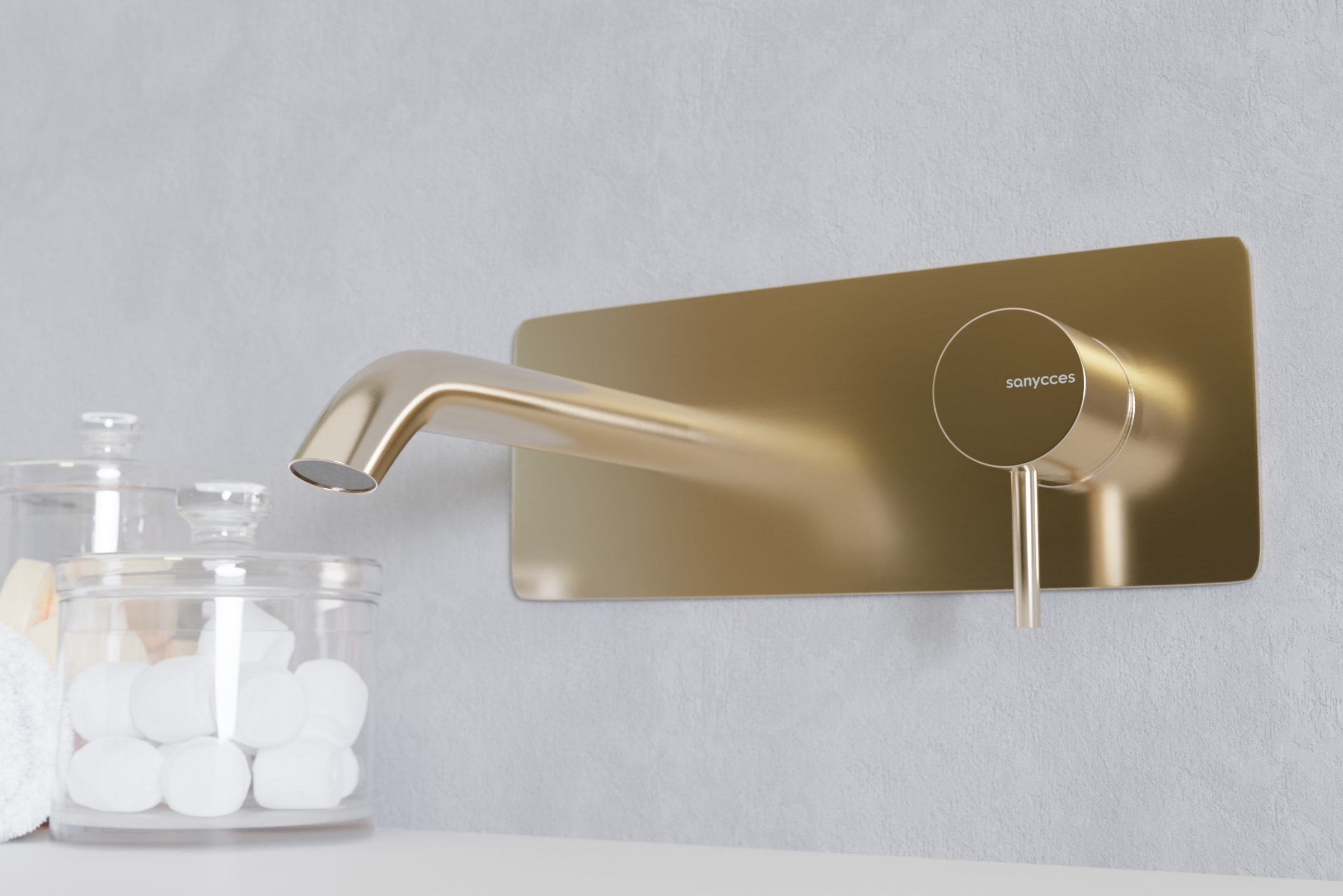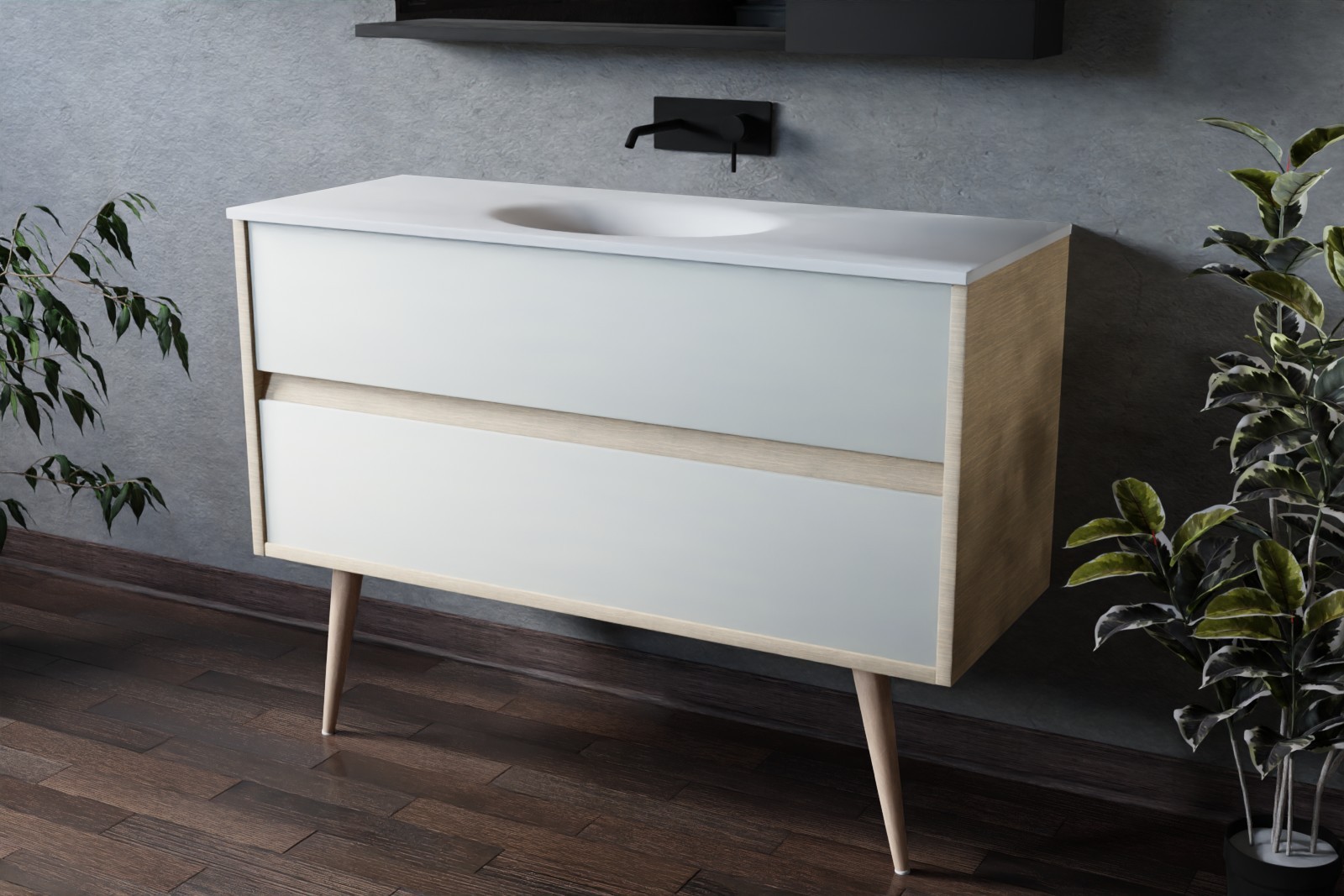You want to install or renovate your bathroom, you're a do-it-yourself enthusiast or you just want to save some money so you can save the budget for another project. It's totally possible to do it, but there are a few things you need to know before you tackle it.
On paper it doesn't look complicated, but if you do your homework you will need a lot of knowledge. It is always easier to call on professionals or a master builder who will take care of all your work. But we know that in this case you will have to make sacrifices, a less well-made washbasin, a smaller shower or a less noble material for your dream bath. These are impossible choices for you, so you will have to pay attention to the budget in another way.
The first and most important task will be to estimate what you feel ready to do or not. This will allow you to know what you are going to do with your budget and therefore to save on labour and to let a professional do the more complex work. It is often better to let a professional do the work if you feel you are not 100% sure you can do it yourself, as this can save you problems in the future.
Now let's go step by step through the work to be done on a bathroom, in order of course.
_1.jpg)
The plumbing
It is often advisable to call in a professional if you are not a plumber or electrician for preparation work in the walls and things that cannot be seen, such as plumbing and electricity. For the plumbing part, it will be necessary to first estimate what already exists, if you buy a new house, it is very likely that the drains and arrivals are already in place. The most complex case will be in an old house to be renovated, where almost all the plumbing has to be redone just to be on the safe side, a broken pipe is never a good thing. There are now plastic pipe systems that will greatly simplify the installation, no need to solder the copper like in the old days.
So to sum up this part, it is up to you to decide whether you want to do it yourself or by a professional. What will allow you to determine this is undoubtedly the amount of work to be done.
.jpg)
The electricity
The second and final part that will surely make you call a professional. As with plumbing, it is important to get the basics right, as poorly done wiring often means not water damage as with plumbing, but fire. The aim of this article is to show you how to build a bathroom yourself, but safely and in the best way. This is why we advise you, if you don't know anyone close to you or if you are an electrician yourself, to ask a professional, as the price is usually worth it. If, despite everything, you want to do it yourself, don't forget that in France, it is forbidden to move your electric meter by yourself under penalty of not being supplied by your supplier. If you want to move it, you will have to call on your electricity supplier, count 1500 to 2500€ for this operation.
The walls
Let's finally tackle the most important part of the project, what you can see! For the walls, in 90% of cases, they will be made of plasterboard, make sure you use waterproof plasterboard around the parts that are sensitive to humidity. The shower, the basin or even the bathtub we advise you for small surfaces to use it for the whole of the bathroom whether it is on the wall or the ceiling, the humidity will be more present there than in a large bathroom. For large bathrooms, you can concentrate on the areas close to the splash and moisture sensitive areas.
Then the walls are installed, the paint or the wallpaper. For the paint, you have two choices: glycerol paint, which is resistant in damp rooms, but which emits a strong odour and volatile components that are harmful to your health. Choose acrylic paint, which has little odour, is not very toxic and can be washed with water.
.jpg)
The floor
For the floor, several options are available to you: tiles, parquet, concrete, vinyl, carpet or even solid surface, even if it is not certified in applications that comply with the DTU. Laying your floor will be more or less complex depending on the type of flooring you choose. Carpeting or vinyl will not pose any problems, unlike tiling or waxed concrete, which requires a certain method and often requires a professional. However, with the amount of information available on the internet, it is possible to do it yourself, with a little patience and perseverance. As mentioned before, the laying of tiles, concrete or parquet requires compliance with the DTU (Documents Techniques Unifiés), which are standards that specify the technical conditions for the proper execution of the work. Don't hesitate to find out beforehand to make sure that your flooring complies with the law so that you don't risk being caught out by your insurer in the event of water damage.
Don't forget that it is difficult to change a tiled floor. You will therefore have to apply yourself from the start to avoid an uneven or bumpy finish. Floor tiles are easier to lay than wall tiles as they will slide around, so don't hesitate to use spacers to keep the space between each tile. Also consider renting or buying a tile cutter, it will be very useful.
The elements of the bathroom
The basin is the most important element of the bathroom. Its installation will require some plumbing work in order to connect it to the drain and the water supply, nothing too complicated. If you wish to install a freestanding solid surface washbasin, for example, you will need to reinforce the wall where the washbasin will be installed so that it does not tear away under its weight. Then, fixing brackets are generally provided, you will have to fix them to the wall using special wall plugs.
If your choice is for a vanity unit which, as its name indicates, will be placed on a piece of furniture, nothing could be easier. It will have to be placed on your furniture, it is advised to apply a thin layer of PU between the two so that the washbasin tops do not move over time.
And finally, with the same system, free-standing basins are also one of the easiest solutions. Fix your basin to your worktop with PU so that it does not move.
The key to placing a bathtub is to have a flat, solid surface. A bathtub filled with water weighs a lot, so you need to pay attention to that when you choose its location. Then nothing could be simpler, a bathtub is always accompanied by installation instructions, make sure with a level that it is positioned perfectly straight and finally you can connect it. Please note that a bathtub, like a washbasin, needs a siphon, so don't forget this if you don't want any bad smells in your relaxation area.
If you want to install the shower yourself, we advise you to choose a shower tray. Many shower trays are available on the market with different materials and prices, so don't hesitate to choose quality. A solid surface shower tray will give you much more satisfaction in 10 years time than a ceramic tray. We recommend a shower tray as it is easier to install than a tiled shower tray, which requires a slope to be created beforehand to facilitate water drainage.
To avoid applying a silicone seal that will get dirty and accumulate bacteria. We advise you to use a solid surface sheet on the wall which will be glued to the shower tray with a two-component adhesive that will create an invisible joint and therefore without the possibility of soiling.
We wish you good luck for your work, we remain at your disposal for any further requests and do not hesitate to think solid surface for high quality products.






